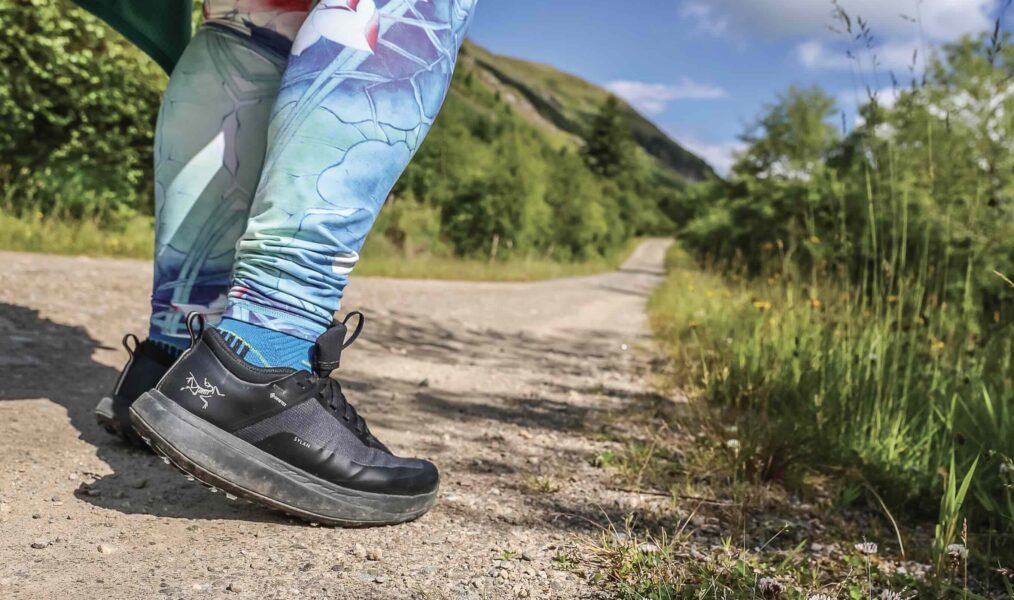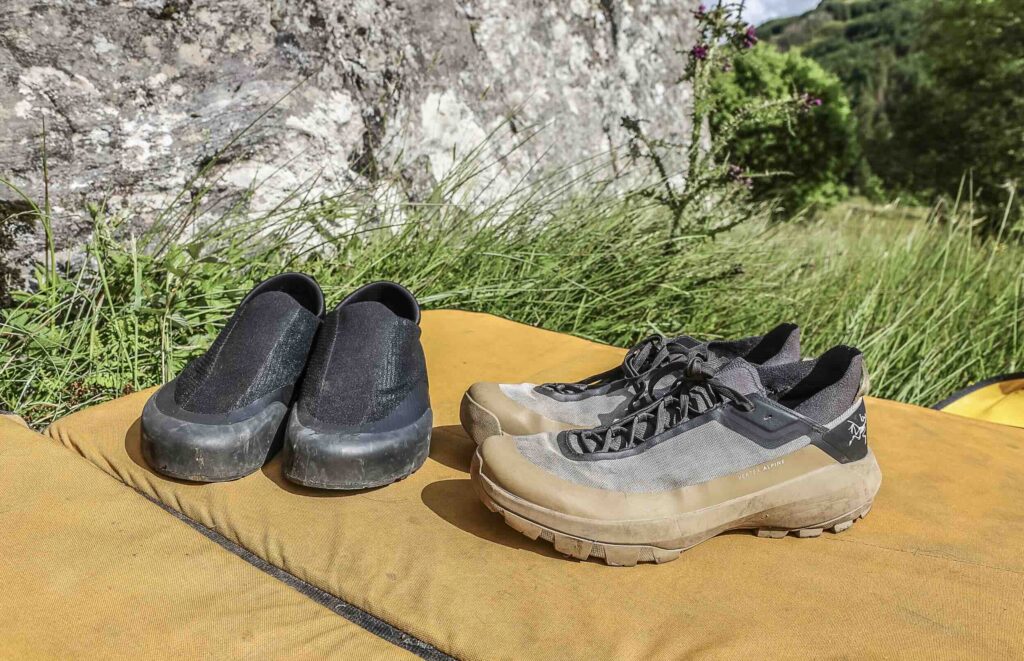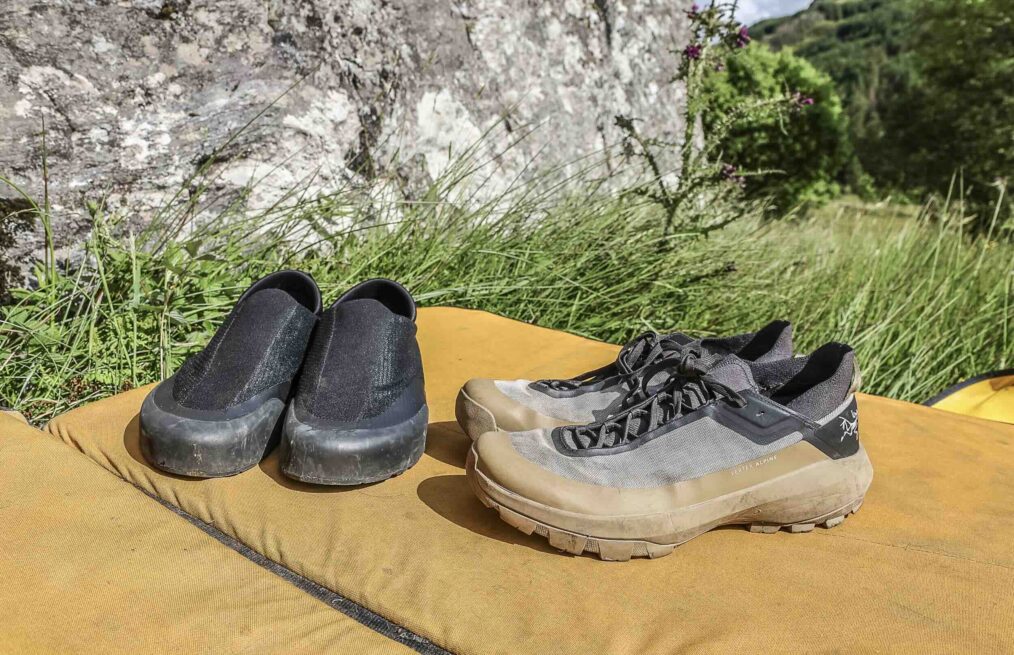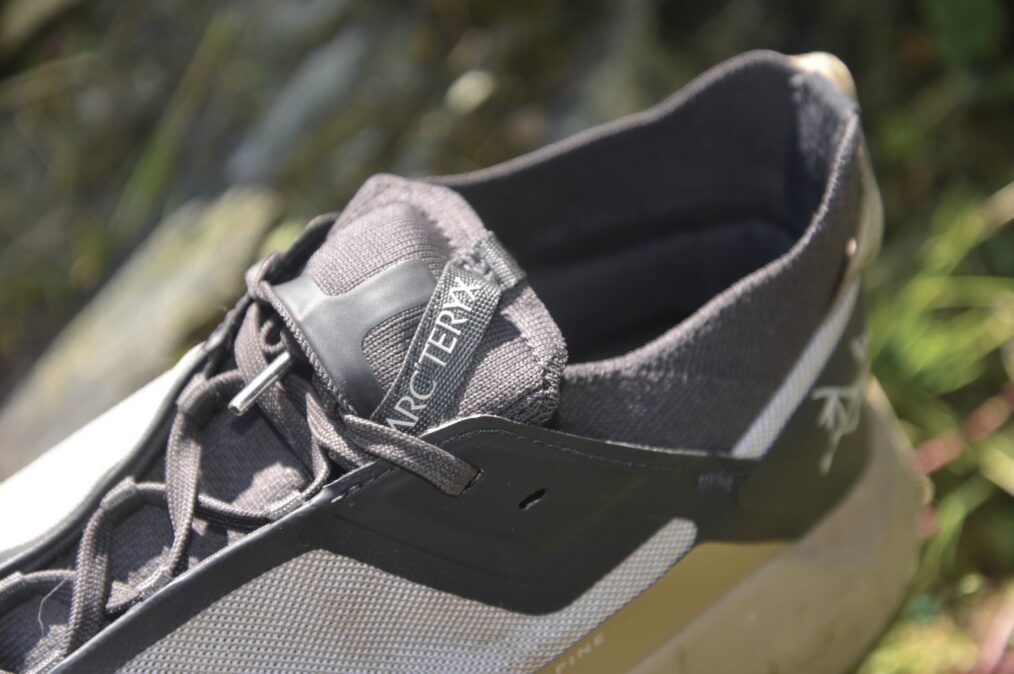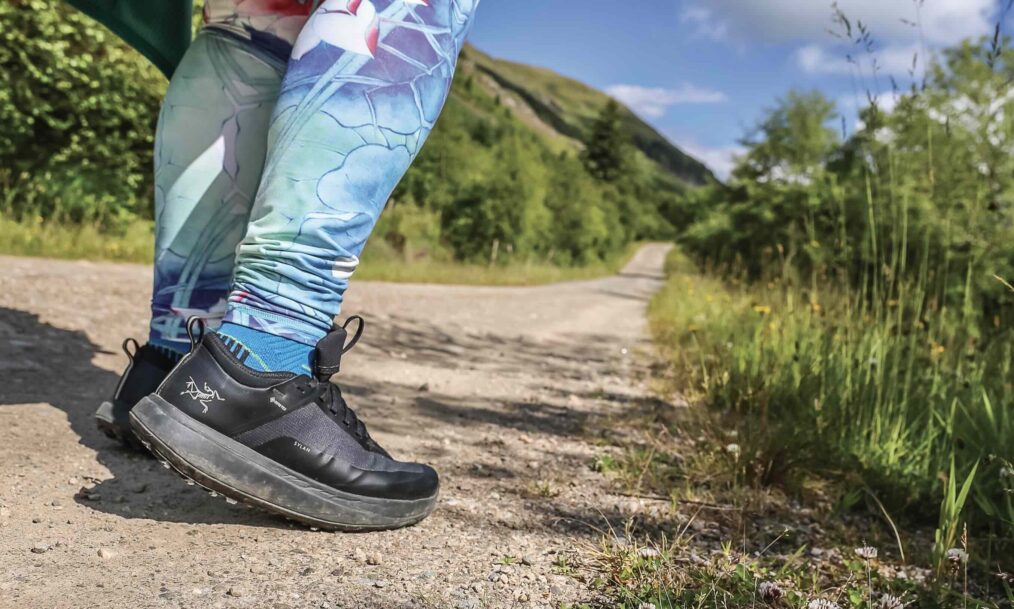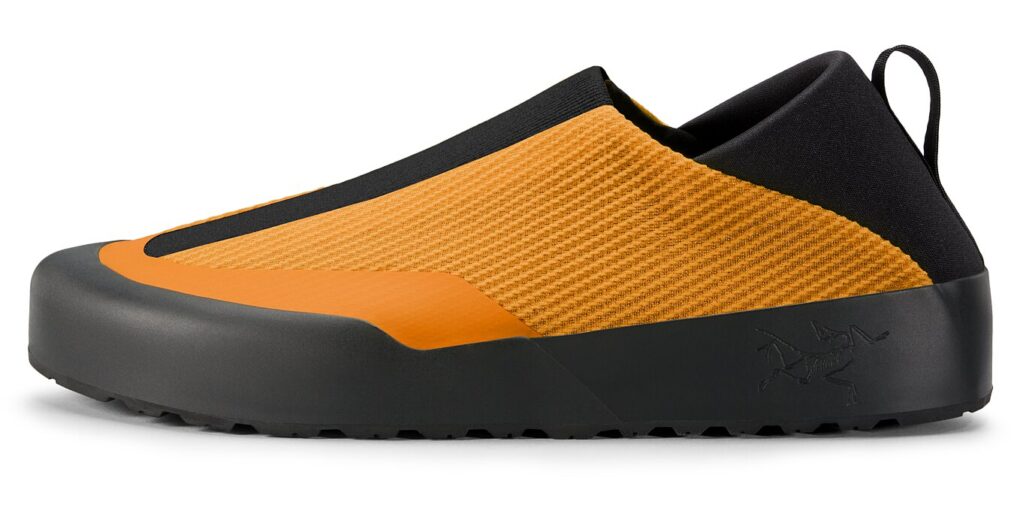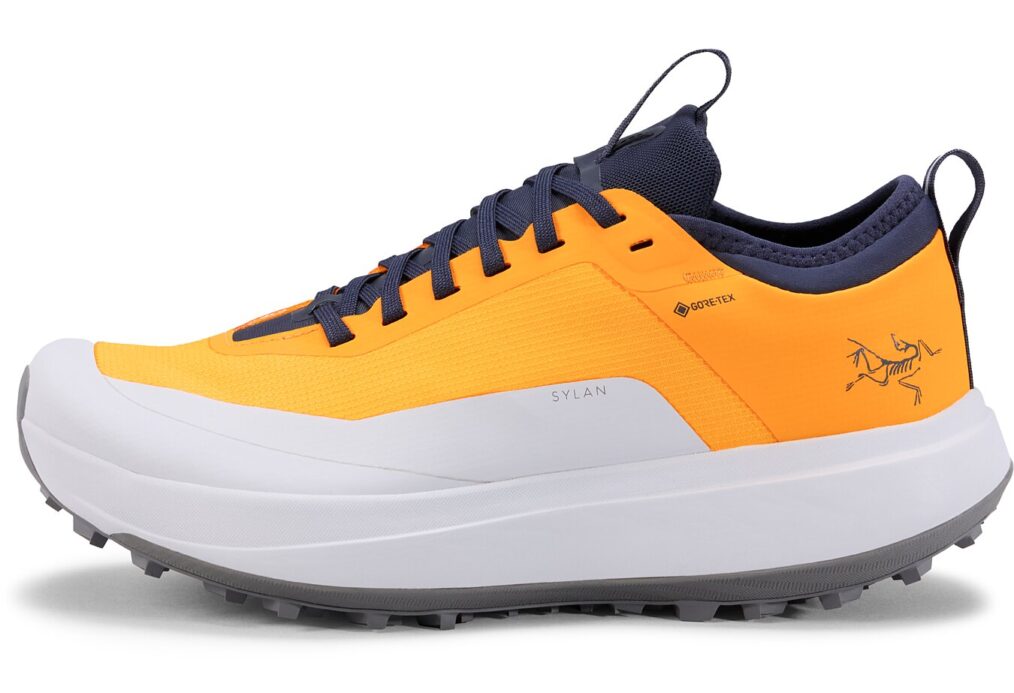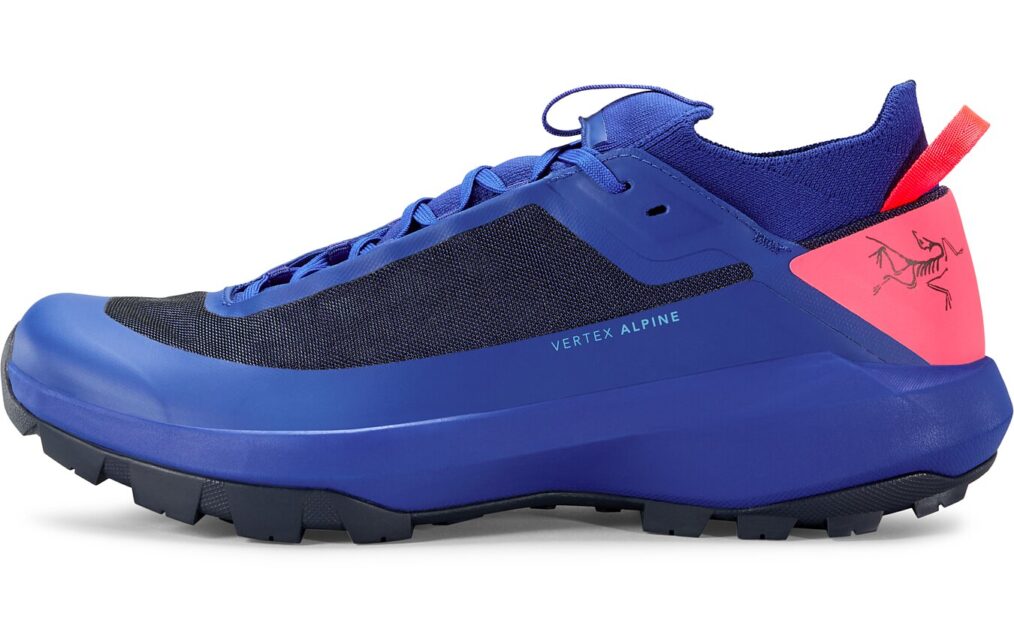Chris Kempster and Amanda Travis test out three new technical shoes from Arc’teryx’s spring/summer 2024 range
It’s nearly a decade since Arc’teryx launched their first footwear range, an 8-model collection consisting of variations of the Alpha shoe and Bora mid boot and featuring a number of innovations that made more than a few people in the outdoor industry sit up and take notice. The most visible of these innovations was the use of heat lamination techniques in the construction of the uppers, using multiple layers of synthetic materials bonded together to give a very distinctive look. Also of note was Arc’teryx Adaptive Fit system which used a separate booty that (on the premium models) was completely removable from the rest of the upper.
Nine years later and Arc’teryx now have a range consisting of 18 styles (for men and women), from lightweight running shoes all the way up to the super-technical, B3-rated Acrux AR GTX, an insulated mountaineering double boot with removable liner. Gone are the removable booties of the original Alpha and Bora models, however the laminated construction of those first models in 2015 is very much still the modus operandi in Arc’teryx’s footwear approach.
Power of three
In March, Arc’teryx launched its spring and summer footwear line featuring three new models that the company say ‘sit at the intersection of run and climb’: the Vertex Alpine, Sylan and Kragg. Arc’teryx say that these models represent the first time that the company’s footwear offerings have been designed independently by an in-house footwear design team, based out of the Arc’teryx Portland Creation Centre. This is significant as previous footwear ranges have been headed up by parent company Amer Sports’ design department (Amer also own Salomon). So what did we make of the three new shoes – which are all available in both men’s and women’s styles, in addition to a GORE-TEX version available in the Vertex Alpine and Sylan? Let’s take a look…
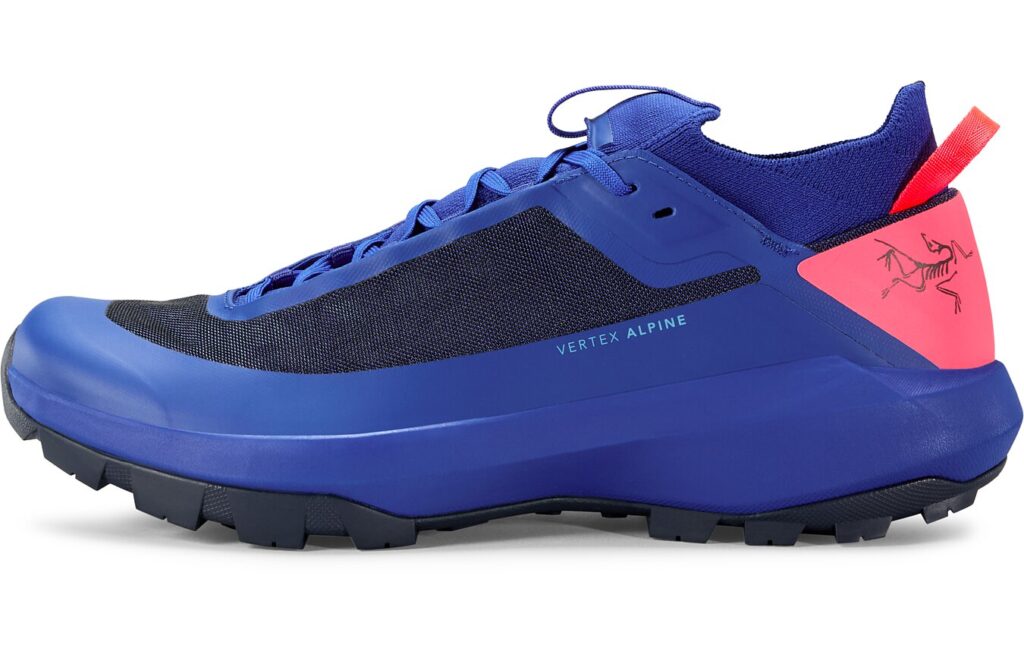
Vertex Alpine
The Vertex Alpine approach shoe comes in Gore-Tex (£220) and non-Gore-Tex (£200) versions, with four different colourways in the non-Gore-Tex version and five for the Gore-Tex version. We had the former version on test in the Canvas/Graphite colourways, which looks really smart but had a slight tendency to retain dirt on the light-coloured woven upper. The construction is exactly what we would expect from Arc’teryx: multiple synthetic components bonded together to give a sleek and robust finish. The shoe has a Matryx woven polyester upper which Arc’teryx says is durable, lightweight, breathable, and flexible, and there are solid inserts overlaid on this all around the foot giving a good amount of protection for the weight. Beneath this sits a Vibram XS Flash 2 outsole with a lug pattern that we would describe as ‘general purpose’.
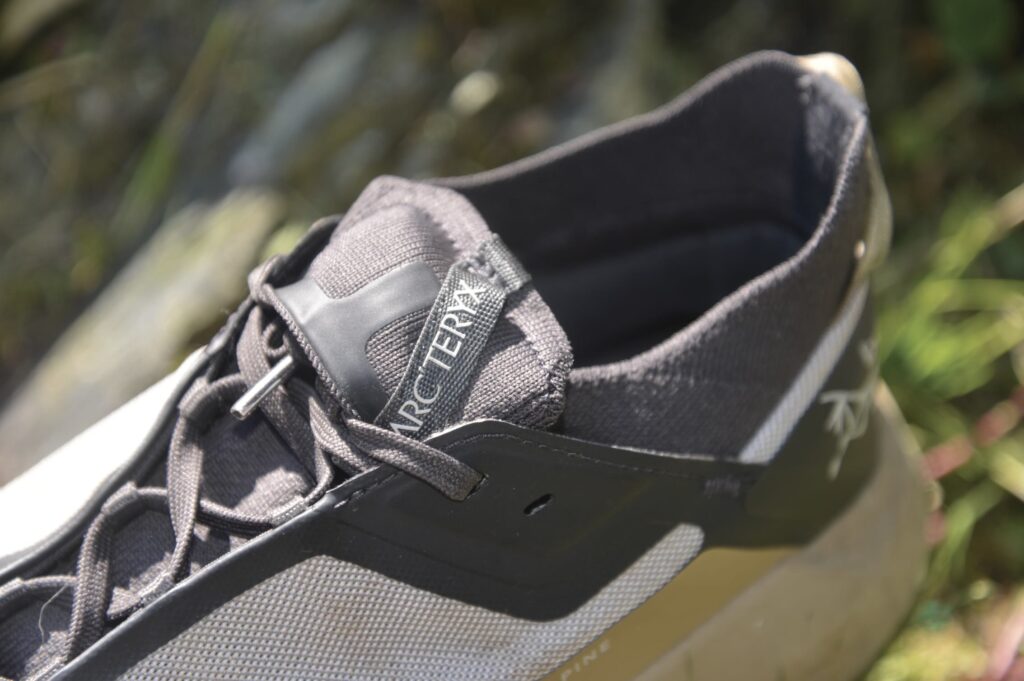
Vertex Alpine (and Sylan) have a stretchy pocket to tuck away laces into
A sockfit-style system around the ankle makes getting the shoes on and off slightly fiddly (even with the two pull loops) but the upside is that it keeps debris out and is also very comfortable. The padded tongue has a neat little feature which is an integrated pocket which your laces tuck into. We tested the Vertex Alpine in a variety of settings, from scrambling routes to gravel tracks to wet and muddy hillsides, and the feeling we got was of a good all-rounder, rather than a technical approach shoe optimised for rock. It is not as stiff and grippy as we would expect from a climbing approach shoe, but this also means that it can take you almost anywhere, from paths and tracks, to mud and grass and, yes, even on rock.
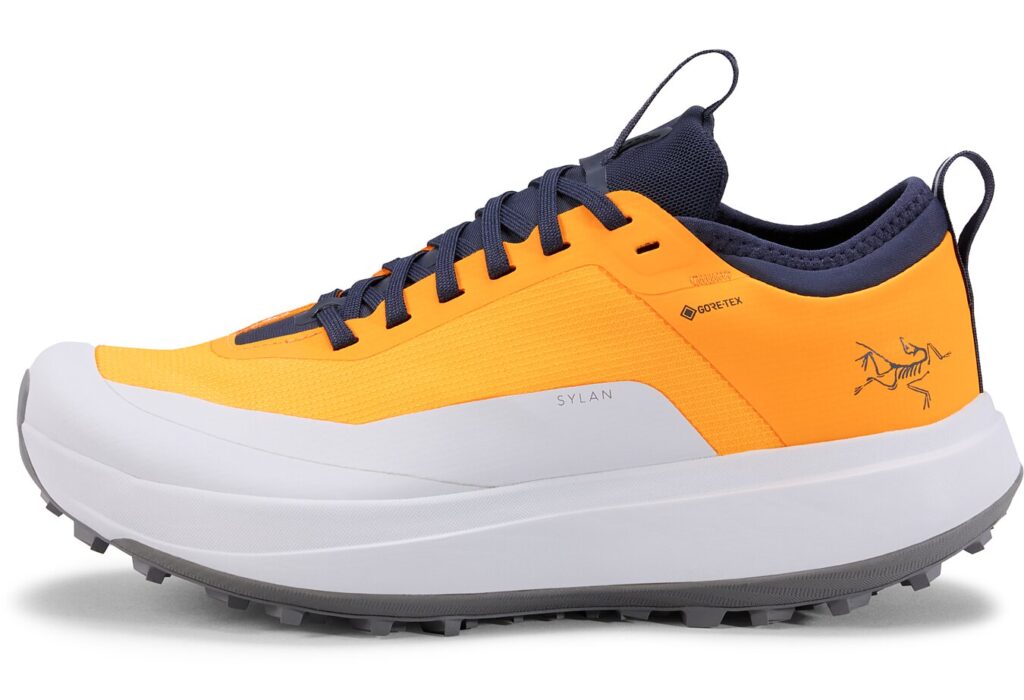
Sylan GTX
The Sylan (available in standard, GTX and Pro versions) is a mountain running shoe that will also appeal to fast hikers. We tested the Gore-Tex version – using them for both walking and running – around our base in the Highlands. While some people may prefer the non-waterproof version (especially for summer use) with this year’s wet weather and some of the bogginess it’s created in the hills, we’ve been more than happy to keep our feet dry with the waterproof version. The shoes are comfortable and feel light even though they come in at 620g per pair – obviously not the lightest on the market, but a good trade-off for the durability and cushioning. The Vibram Megagrip outsole with 6mm lugs gave effective grip in dry conditions as well as wet and muddy conditions. We liked the knit collar which we found effective for keeping debris out, and there’s a good amount of cushioning which has kept feet comfortable on rocky terrain. They are durable and protect the feet well, which has been great for the rugged hills up here. Does the rocker design help with propulsion? We think so. Both walking and running feel effortless in the Sylans.
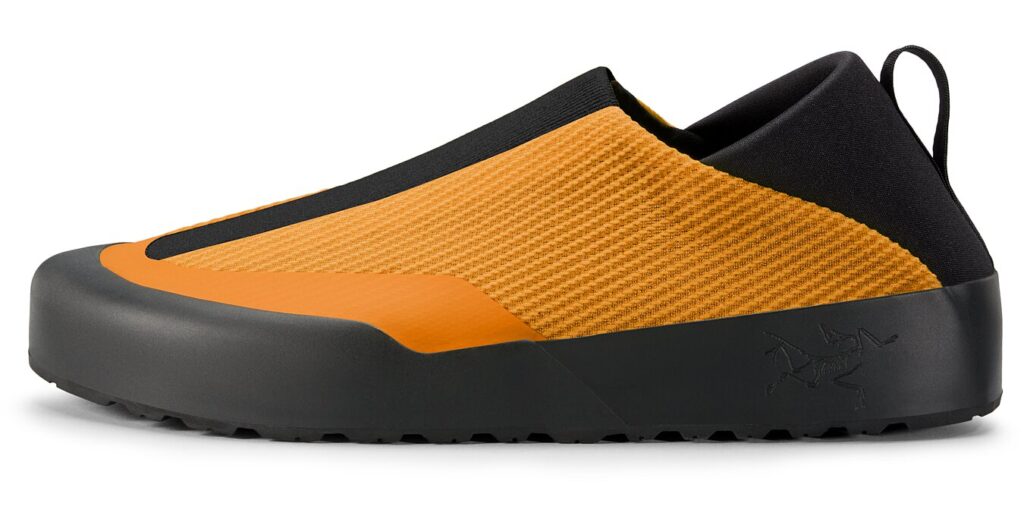
Kragg
The Kragg is the last of the new models we looked at, and it’s the most esoteric of the three shoes. It’s aimed squarely at climbers and is touted as the ideal shoe to take bouldering or to a crag, to use when you’re belaying, waiting to climb or simply hanging out. They are extremely light so could also be clipped to your harness while climbing multi-pitch routes, and then slipped on for the walk-out. The heel is collapsible, so you can quickly get them on without faffing about. In terms of construction, the upper is a single layer of breathable, stretchy Spacermesh that hugs your feet, and there’s an all-round rand that gives some protection. The sole is flat (i.e. no healbreast) and with its Megagrip rubber is good for smearing.The upper is very breathable but not waterproof, and there’s a cushioned foam insole (made with bio-based content). In use we found the Kragg okay for short walk-ins, however they didn’t provide as much support as a typical approach shoe and the outsole is optimised more for rock than grass or mud. We used them on easy scrambles and boulder problems, but the lack of rigidity means that you’ll quickly find they reach their limits as you try harder lines. However, as a comfy pair of shoes to don between climbs or to hang out in at the crag, they are absolutely superb, and you’ll appreciate slipping into them when your feet are aching after wearing tight climbing shoes. They could also double as camp slippers, so generally they are a really useful shoe to have.
Summary
The 2024 Arc’teryx footwear range is both innovative and comprehensive, and the brand has certainly established itself as a major player in the market a decade after their first forays into footwear.


